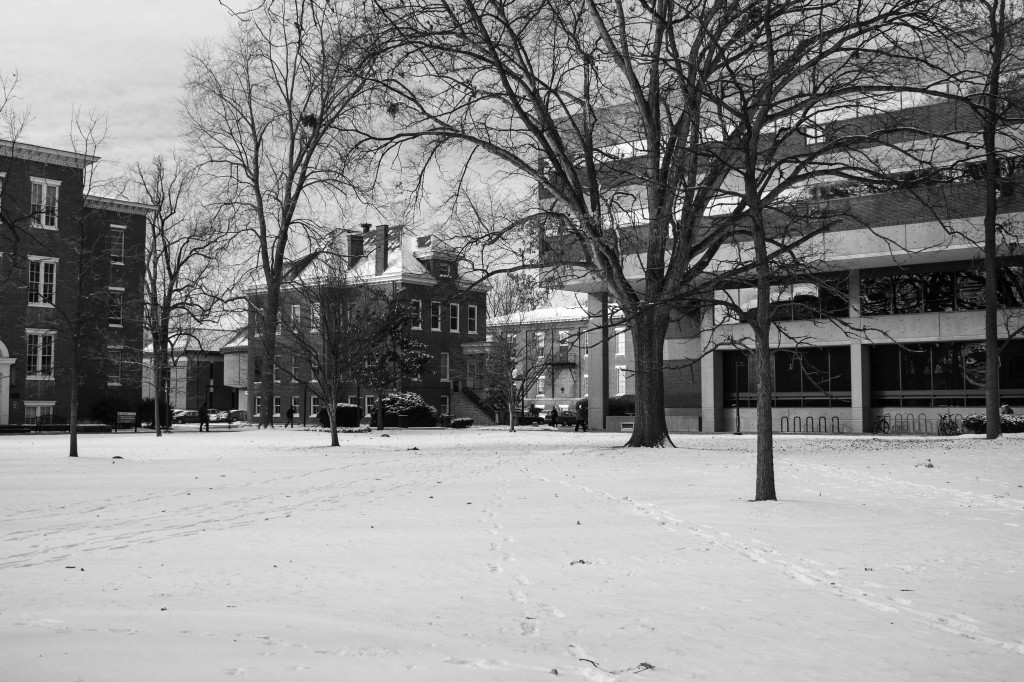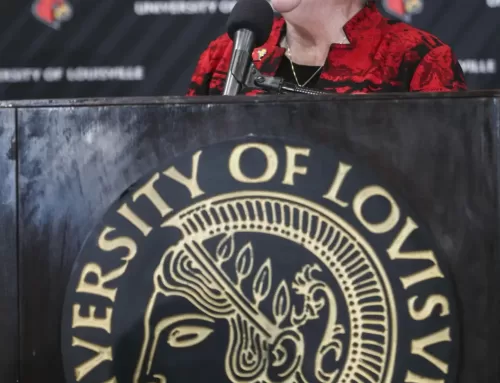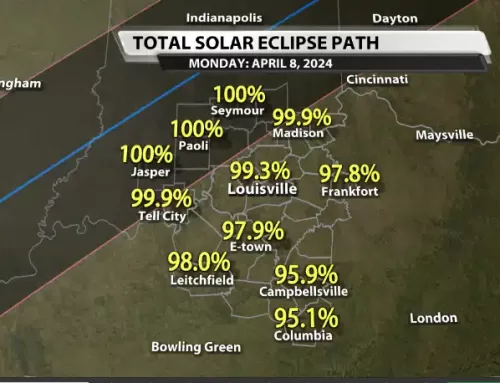By Olivia Krauth–
As winter ends, the university’s physical plant is facing a serious financial hit from the treacherous winter. Some estimate snow removal alone could balloon to four or five times more spent in years past.
Larry Detherage, associate vice president for facilities, estimates that they have spent around $230,000 on snow removal. The figure includes salt, workers, equipment maintenance and a stand-by contractor in case the weather requires heavy equipment.
“This has been a bad year,” said Detherage.
Money, money, money
Physical plant does not budget for snow removal. Instead, it takes money out of its general $27.5 million annual budget.
According to Melissa Shuter, chief of staff for the office of business affairs, the budget comes from a “general fund” of about $496.5 million. Student tuition makes up 55 percent of the fund, with the remaining 45 percent coming from other sources.
Detherage is unsure how the increased amount spent on snow will ultimately impact his budget for the remainder of the fiscal year.
“We’re probably going to ask for some budget relief because of this,” said Detherage. “Our budget situation the way it is, the overall budget situation, I may not get it, so something will get cut back, but what that is, I don’t know at this point.”
Despite the increased amount of snow and ice removal this semester, the department has not hired any temporary workers, instead having regular workers work overtime to meet demands.
“Guy and gals are working long hours on both campuses,” said Aaron Boggs, assistant director of physical plant maintenance for the Belknap and Shelby campuses. “Some of our salaried people put in long shifts to make sure that we manage the hourly crews as best as we can during the events.”
While physical plant had to pay for many aspects of the snow removal process, it could have been much more. While several cities had difficulties with a high demand on salt and rising salt prices, U of L did not have as much trouble.
“The entire nation is suffering from a salt shortage, and it’s a mined product out of the ground, so you can only mine so much at a time,” said Boggs.
“Everybody is using a lot of salt. We have a quota every year that our salt company gives us, and once we use that quota, we usually don’t have a lot of other options to go to. This year we stockpiled plenty of salt early on, and we still have plenty of salt on hand to take care of many more storms here.”
Preparing for the storm
“A lot of people think it is just putting a shovel on the ground and plowing,” said Boggs. “There is a little more science going into it.” U of L’s preparations for brutal winter weather start days prior to the storm.
“We are constantly monitoring the weather to try to figure what it’s going to do. Is it going to snow at seven o’clock or 10 o’clock? We try to monitor that,” said Boggs. He explained that they coordinate with other city authorities, including JCPS, to decide the best course of action.
“We’re in this big email stream together, talking days in advance of the storm. We try to take some lead from them, they have been on it, they’ve been watching it, they have time to dedicate to it much more than us,” said Boggs.
Three to four days out, Boggs begins to work with his counterpart at the Health Sciences campus, Glen Todd, planning pretreatments and adjusting plans due to rain.
“We typically try to coordinate operations so whatever I’m doing, Glen is doing and vice versa so we can build some consistency in our operations,” said Boggs.
“We call the staff in whenever we feel like it is time to start deicing and pushing snow,” said Boggs. The grounds workers then begin to plow sidewalks and parking lots, as well as lay down salt chosen based on the temperatures and weather conditions.
The people behind it
Those responsible for snow and ice removal are the grounds workers at each campus. Belknap has 21 grounds workers when fully staffed, and the Health Sciences campus has three, with five or six people who volunteer to help when needed as well as a foreman. In some cases, additional help is needed.
“When we get three or four inches, like we did in this last storm, we have a contractor who we can put on standby,” said Boggs. “We have always got them available in case it gets too much for us to deal with.”
Detherage also noted that building custodians are responsible for clearing building entrances out 25 feet.
“Yeah, they’re a big part of the team,” said Todd on the custodians.
For the grounds workers, the key this season was to remain flexible and available. “I think one of the main things is remain flexible because it’s the weather,” said Todd with a laugh.
Provost Shirley Willihnganz described some of the workers’ times in a February email to U of L employees, referring to their efforts as “simply heroic.”
“Some of them actually have spent the night on cots in our steam and chill water plant because we weren’t sure they could get back to campus to begin clearing snow and ice at 4 a.m.,” wrote Willihnganz.
“People sometimes forget that they have to get out on the road and figure out a way to get here,” said Detherage. “They’re coming in at times when the roads have not been plowed or salted.”
“A lot of them will come in in advance because they know it’s coming,” said Boggs.
Boggs also spoke highly of all workers that helped keep campus clear in the face of bitter single-digit temperatures and heavy snow and ice.
“Our men and women who are charged with snow removal really take it personally,” said Boggs. “We take it personally when people fall and get hurt. We don’t want to see that.”
Photo by Sasha Perez / The Louisville Cardinal.




